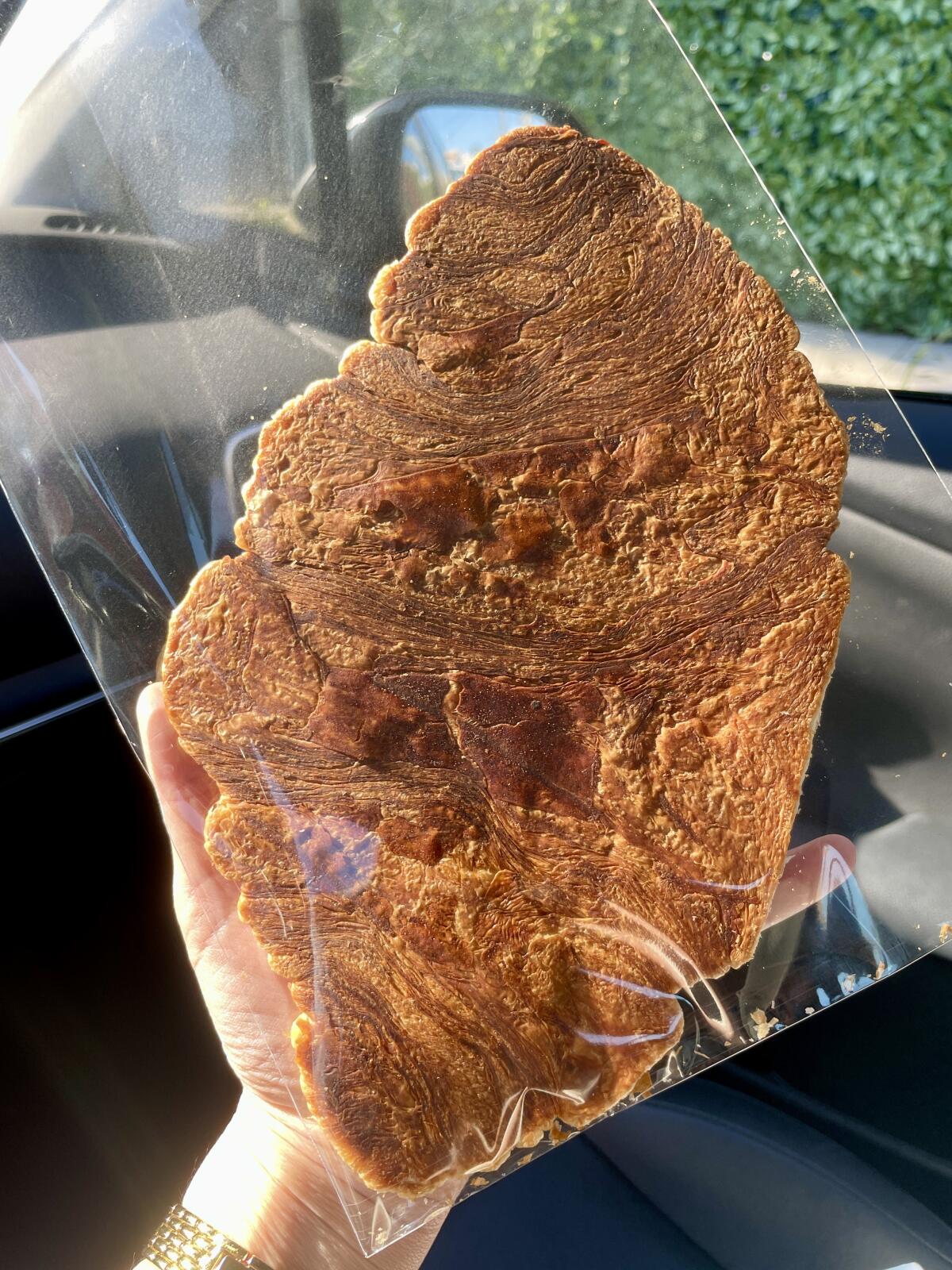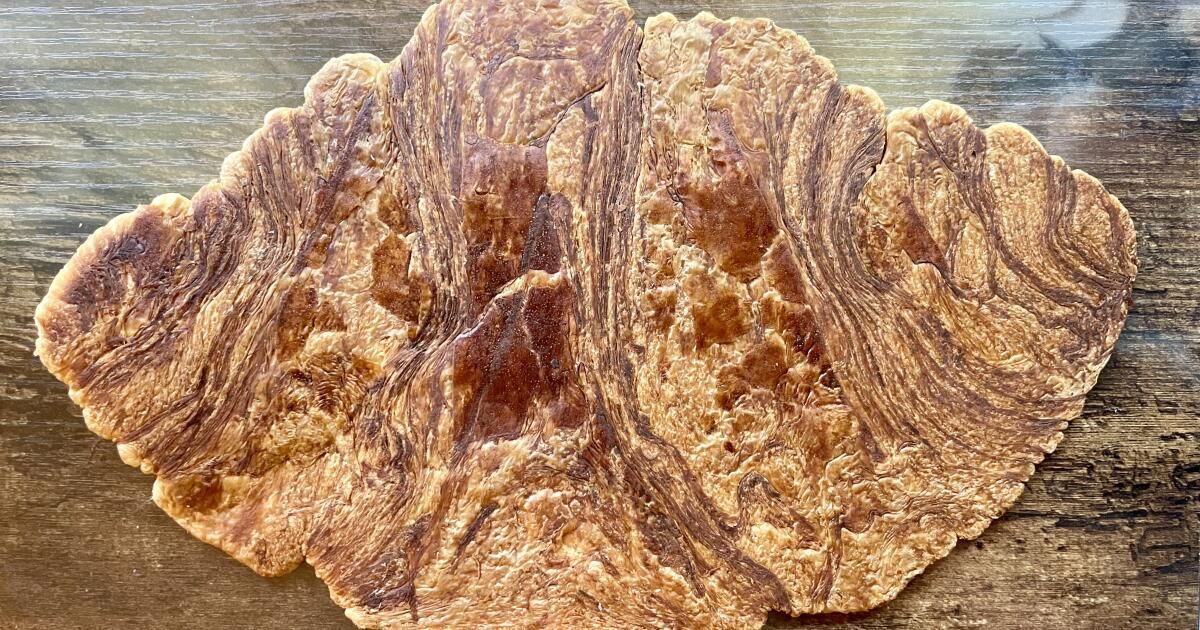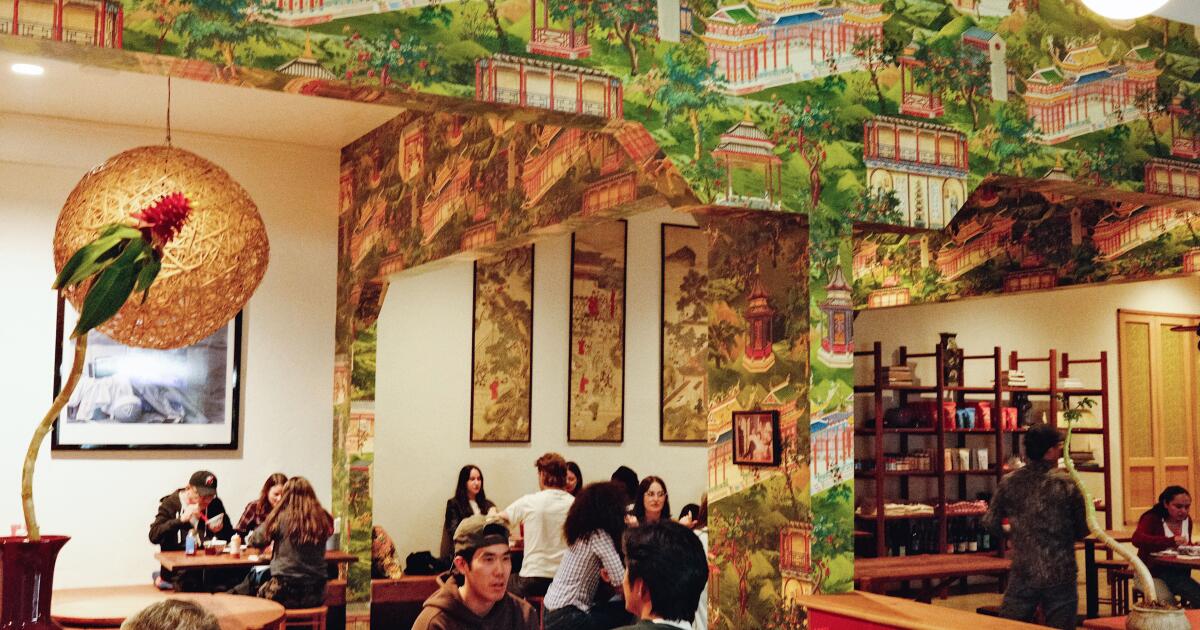I'm a serious newspaper food columnist. I'm not tempted by the next viral baking trend. I won't spend money on something simply because it's bigger or smaller than it should be, or because it's a hybrid of two things I like.
Me too: I spent an hour in traffic driving to a bakery in Koreatown because someone I follow on Instagram posted a video of a “flat” croissant.
The flat croissant looks like an optical illusion. A cartoon croissant crushed by a rock. A magic trick or something out of a Harry Potter newspaper. Imagine reaching into a painting by Osias Beert or Pieter Claesz and pulling one of the realistic foods out of the canvas.
It is approximately 1 millimeter thick and is made with a machine that presses and cooks the croissant. The flattened result produces a surface reminiscent of the beautiful Wave sandstone striations in northern Arizona. It is a pastry abomination that subverts the very idea of a croissant, the precious contrast between the delicate crust of the dough and the ultra-spongy center.
A search on TikTok will turn up videos with millions of views showing flat croissants at various bakeries in Korea, where the trend first took hold. According to Eater SF, you can also find flat croissants at a bakery in the Bay Area. I was first introduced to the bakery by Jae Hwa Yu, who goes by the name MissPiggieEats on social media. Yu recently posted a video of the croissant, called keu-loong-gi, at Coin de Rue, a cheerful bakery in the heart of Koreatown.
Flat croissants, also called keu-loong-gi, from Coin de Rue bakery in Koreatown.
(Jenn Harris / Los Angeles Times)
I was hoping the croissants would get their own display, or at least a presentation to match the online fervor. On a recent visit, I found them stacked in the pastry case along with white bread and sugar donuts.
The woman behind the counter used a pair of tongs to carefully remove one of the croissants ($3) and place it in its own plastic sleeve. She also gave me a small container of whipped cream for dipping.
“Oh no!” She exclaimed. A small corner broke when she placed the croissant on the counter. “I broke it. I'll get you another one.”
Like a 3D croissant, the 2D version smells like butter. The crust is brittle but not so delicate as to break. It all tastes like that crunchy piece you peel off the top of a good croissant.

The flat croissants from Coin de Rue in Koreatown are about 1 millimeter thick and about 10 inches long.
(Jenn Harris / Los Angeles Times)
Pastry chef Rachel Lee said she makes the croissants with a special press that her father, owner Hyo Sang Lee, bought in Korea. The unfermented croissant dough is sprinkled with rock sugar and then baked and flattened in the press. Croissants never see the inside of an oven.
Although Lee uses a hot press, I found many other flat croissant baking methods online. Some bakeries flatten the raw dough for croissants and then bake them under a heavy tray to hold their shape. I've also watched countless videos of people making their own versions at home, flattening baked croissants with a rolling pin and then toasting both sides in a hot pan.
But none seemed as flat as Lee's. At most, you can see two layers. The entire rolling of dough is compacted beyond the reach of sight. And when you bite into it, it's crispy like a cookie.
“Our customers already like the popular croissants, so my dad thought why not try a different texture instead of being filled with cream or something,” he said. “And I wanted to do something that wasn't familiar in Los Angeles.”
While the bakery has been open for three years, Lee said they just introduced the croissants about six months ago.
“I'll see people looking at 3-D versus 2-D, but a lot of people understand both,” Lee said.
I broke the croissant into large pieces and then dipped them into the whipped cream. One end was thicker than the other by perhaps half a millimeter, allowing for a bit of chew to remain.
The more I ate, the more I thought the word “abomination” was too harsh an evaluation. What would happen if she considered the flat croissant to be the best part of a croissant, maximized? Like a muffin top. The bottom of an ice cream cone filled with chocolate. The crispy edge of a pan of brownies. The first three seconds of a bite of kouign-amann.
Unless you like the middle part better. Then you should buy a croissant.












